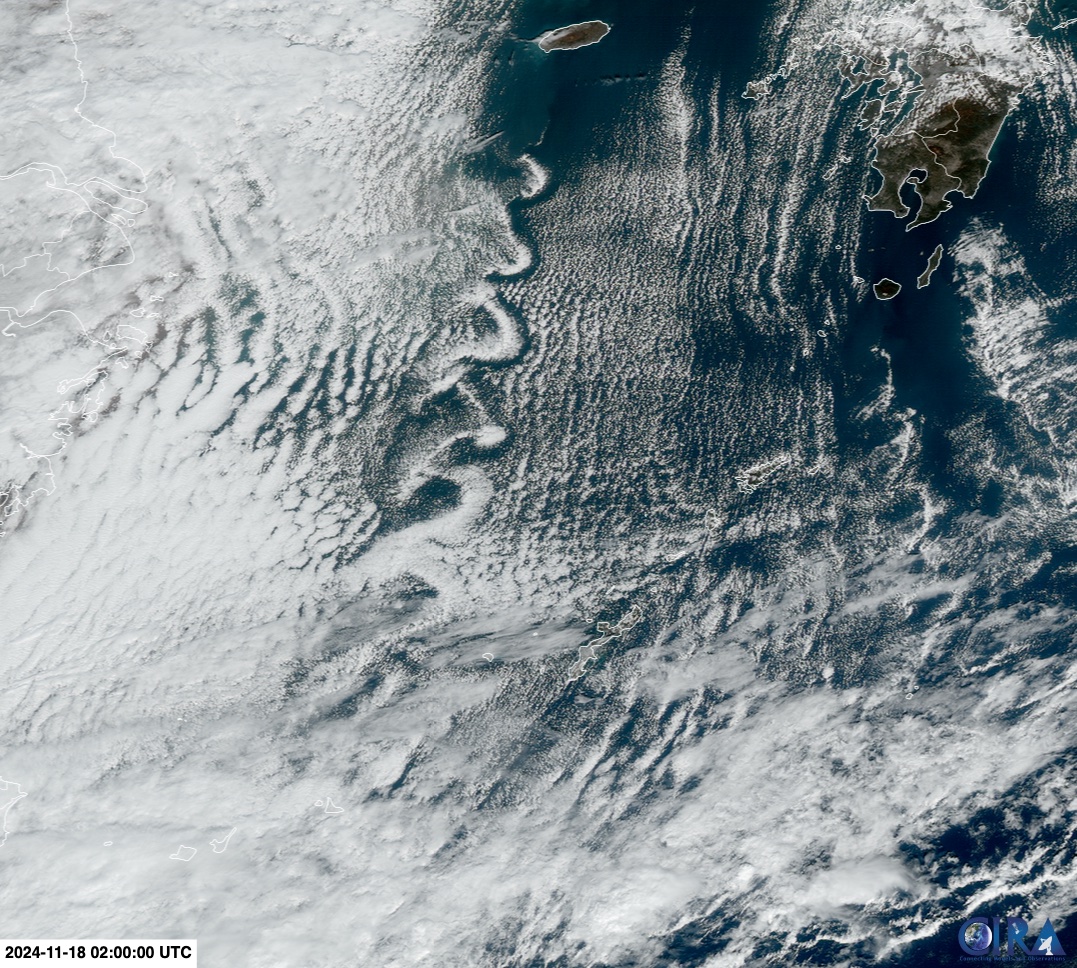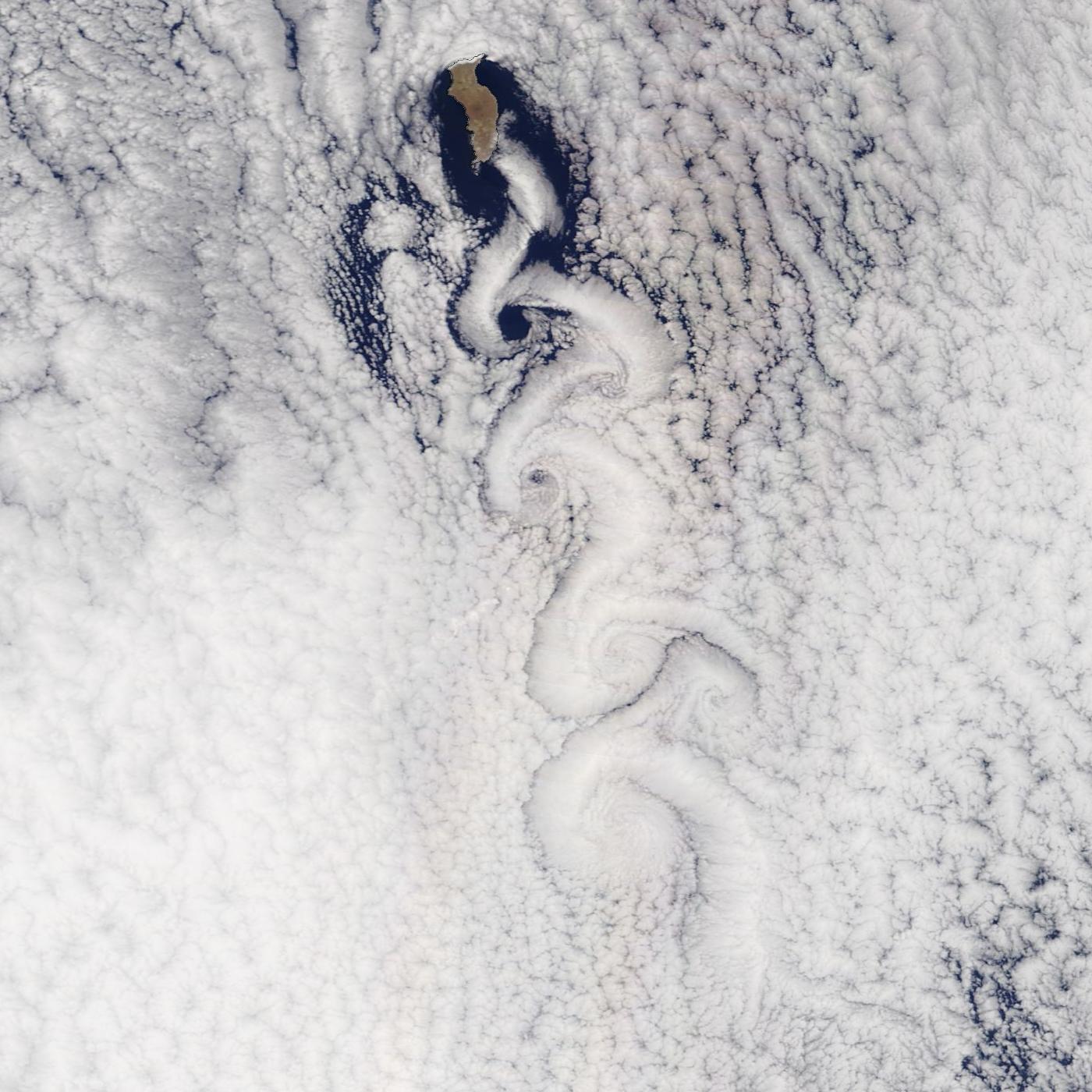News
‹ back to weather news
News
-
Satellite spots von Kármán vortices over East China Sea
Ben Domensino, 19 November 2024A rare snake-like cloud formation caused by a phenomenon called von Kármán vortices has been spotted near Japan this week.
The satellite image below shows the unusual clouds snaking to the south of the Korean Peninsula on Monday, extending over the East China Sea between Japan and China.

Image: von Kármán vortices south of South Korea’s Jeju Island on Monday, November 18, 2024. Source: CIRA/RAMMB and Himawari-9
von Kármán vortices, also known as von Kármán vortex streets, are caused by a repeating pattern of swirling vortices that occur when air at the cloud level is forced to flow around an island or mountain.
von Kármán vortices have been known to occur in many different parts of the world, including the Canary Islands near the northwest coast of Africa, Guadalupe Island off Mexico’s Baja California Peninsula and the Juan Fernández Islands off the coast of Chile.

Image: von Kármán vortices flowing off Guadalupe Island on July 2019. Source: NASA Worldview
One common feature about the islands that frequently create von Kármán vortices is their height. Small islands with high mountains, typically volcanoes, are ideal candidates for producing von Kármán vortex streets.
The peak of South Korea’s Jeju Island, which produced Monday’s stunning vortices, sits just under 2,000 metres above sea level. This is only a couple of hundred metres below Australia’s highest peak, Mount Kosciuszko.
Video: von Kármán vortices on Monday, November 18, 2024.
von Kármán vortices are named after Theodore von Kármán, who was a co-founder of NASA’s Jet Propulsion Laboratory and one of the first scientists to describe this atmospheric phenomenon. His name is also used for the Kármán line, which is one of the conventional human-defined thresholds between Earth’s atmosphere and space.
- Other news
- Mon 25 Nov 2024 Severe heatwave takes hold of NSW
- Mon 25 Nov 2024 Heaviest rain in almost three years in Victorian city
- Mon 25 Nov 2024 Big stormy end to spring looms for Australia
- Sun 24 Nov 2024 Nature’s air conditioner: how the seabreeze will help Sydney cope during the heatwave
- Sat 23 Nov 2024 Ever Wondered Why It Takes Longer to Fly from Brisbane to Perth Than the Other Way? Here’s the Surprising Reason!

